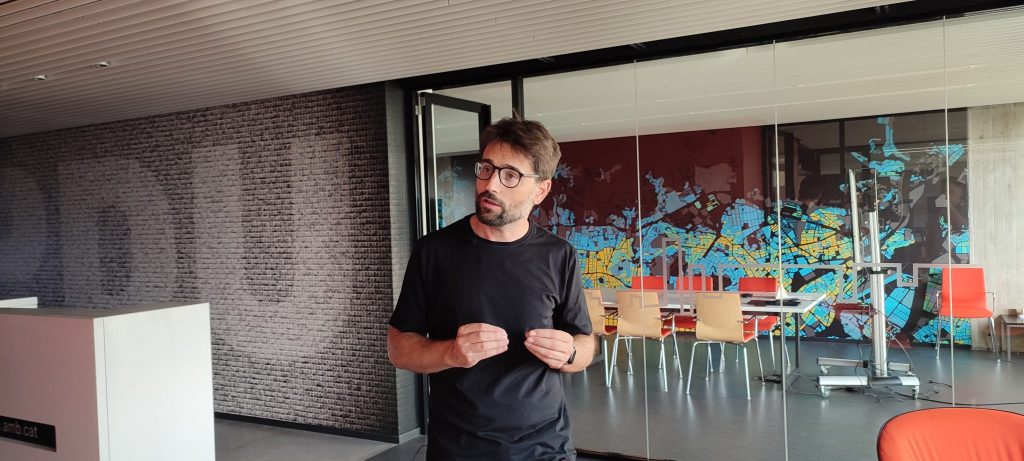For 10 years, experts have been working on the plan that will set the development trajectory of the Metropolitan Area of Barcelona. More than 15,000 people were involved in the creation process, 13 exhibitions were organized, 21 papers were published and 500 experts worked so far on the future Metropolitan Urban Master Plan (PDUM).
1.6 million people live in the city of Barcelona alone. In the rest of the metropolitan area we have another 1.6 million. All of them need to get to work, they need to have access to quality services for education, health and more, they need shops close to their homes and places to spend their free time. The challenge for the team of urban planners at the Area Metropolitana de Barcelona is to think of a plan for the development of the area in such a way as to respond to these needs and not create other problems, especially environmental problems. Their mission is also difficult because the geography is as different as possible, from the sea to the mountains and along the route climbing several elevation steps.
In the offices of the urban planning service we met Javier Ortigosa, head of the mobility and infrastructure office, who gave us the tour while his colleagues worked and consulted around us. What caught our attention was something right in the middle of the office: rectangular boxes stacked one on top of the other with PDUM written on them. Javier invited us to pick up one of them. It measured about 10 kg and contained the plans that were to be transmitted to the 36 municipalities. As we made our way to the area where we were going to discuss the plan, we passed a black and white wall made up entirely of photographs of those who had worked until 2016 on the development of the PDUM.
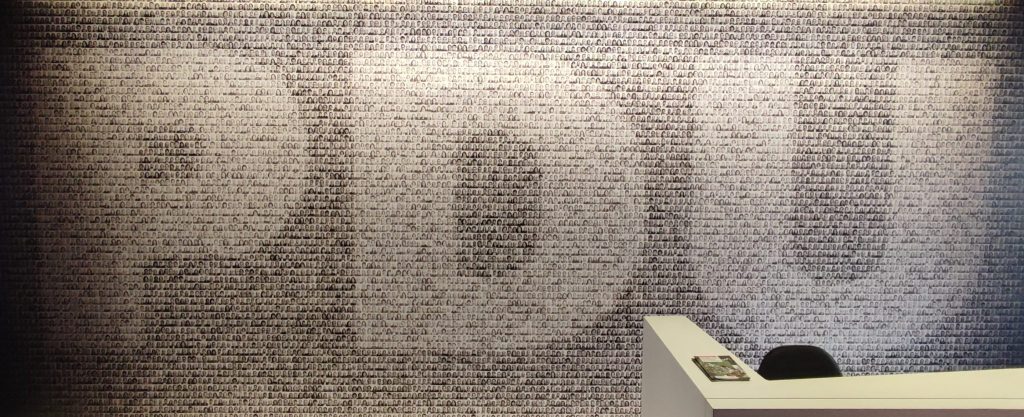
The process of creating the Metropolitan Urban Master Plan began in 2013. In the first three years, reports were written and published on topics such as the urban factory or mobility, expert meetings were held and exhibitions opened to the general public were organized. The plan is currently 60-70% completed and available online. People can make formal requests after reading the plan if they think certain things should be changed. Depending on the requests, if they cannot be resolved amicably, legal processes can also be reached. If it doesn’t go that far, the plan’s final publication date is expected to be somewhere in two or three years.
The first urban plan was published in the 70s, when Spain was under dictatorship and there was some standardization for what urban development meant. Once we entered democracy, fixes were attempted, building codes were published, and even though these major changes took place, the bottom line was not changed, the original plan being valid to this day. What AMB and Javier Ortigosa’s team are trying to do is update and change the trajectory of urban development.
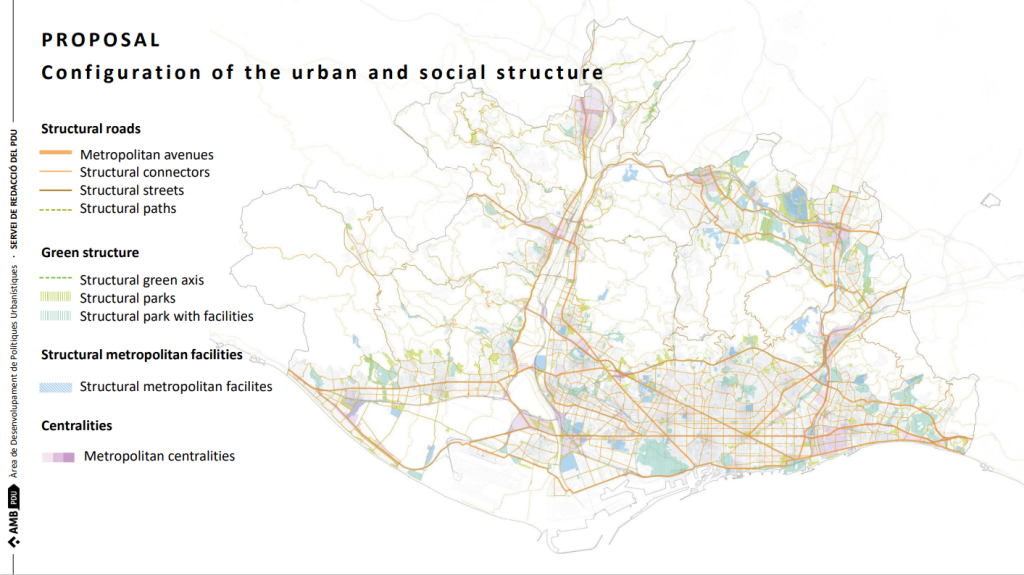
When the AMB urban planning team comes up with a technical proposal, it reaches the mayors to be validated. Usually there are requests for changes to what the cost of certain facilities means or how the proposals can be better integrated into the local perspective to best meet people’s needs.
In order to create plans adapted to real requirements, information is retrieved on essential areas such as mobility, energy consumption or cartography. AMB works with transport units and the Technical University to find solutions together so that people can move as sustainably as possible from home to work, school or wherever they need.
The plan has three main objectives:
1. Stopping sprawling growth and land consumption
2. Creating a green access network to reduce both energy consumption and increase the level of circularity
3. Creating metropolitan boulevards that make a trip from one municipality to another feel like an exit from one neighborhood to another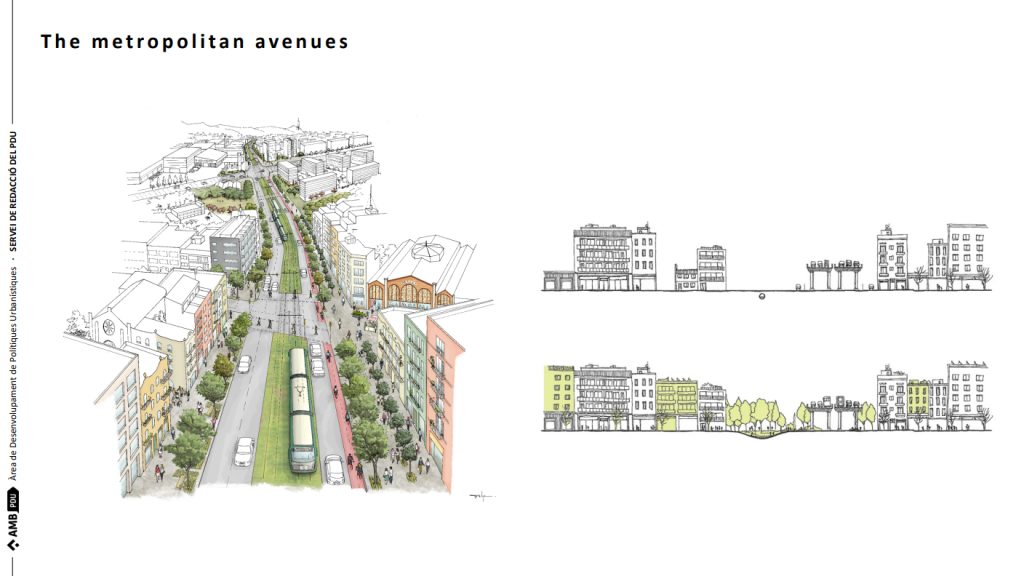
PDUM also tries to solve the problem of density. In Barcelona, for example, there are areas where high density makes no sense, while other areas, where it would make sense to have more people, are insufficiently used in this respect. Scarce housing in office districts and commercial spaces means an increase in car dependency. The fewer functions an area has, the more the person will choose to travel with the option that is most convenient for him because he knows that he will be at work for eight hours and then he has to drive another hour home or he knows that he will spend four hours at a mall and then drive home. The opposite is also true. If he can get to work on buses that run in dedicated lanes, with air conditioning, space and high frequency, if he can do his shopping close to home and has parks or areas to spend his free time, then he will no longer choose to waste time in traffic or looking for parking spaces.
Javier Ortigosa and his team believe in the idea of having everything you need within 15 minutes. Even though it is impossible to get from one side of the city to another in 15 minutes by any means, and this will remain a reality for big cities, on a personal level we can find ways to reduce our travel time to spend more time with loved ones or doing what pleases us. Half of the trips in the Barcelona Metropolitan Area are made by non-motorized means, i.e. on foot in percentage 47% and by bicycle or scooter in percentage 3%.
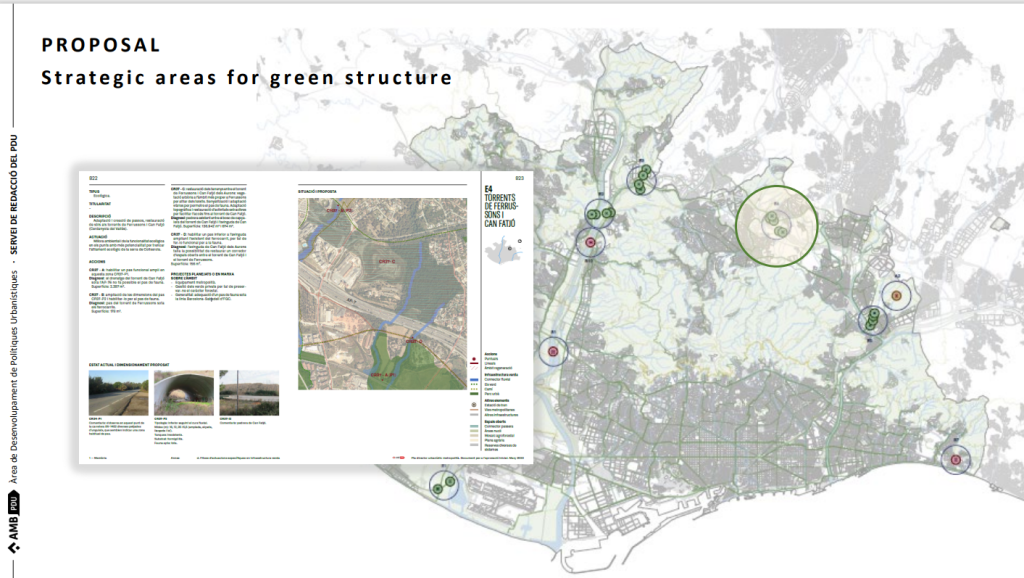
What we learned from Area Metropolitana de Barcelona is that we need a 30-year vision when thinking about how we want our cities to look and the connections between them. Even though it took 10 years and a few more until the plan is completed, by having all the stakeholders in the metropolitan area involved in the process it is guaranteed that it will meet the needs of the general public.
This article is part of the EU Commission project Functional Areas in the EU

